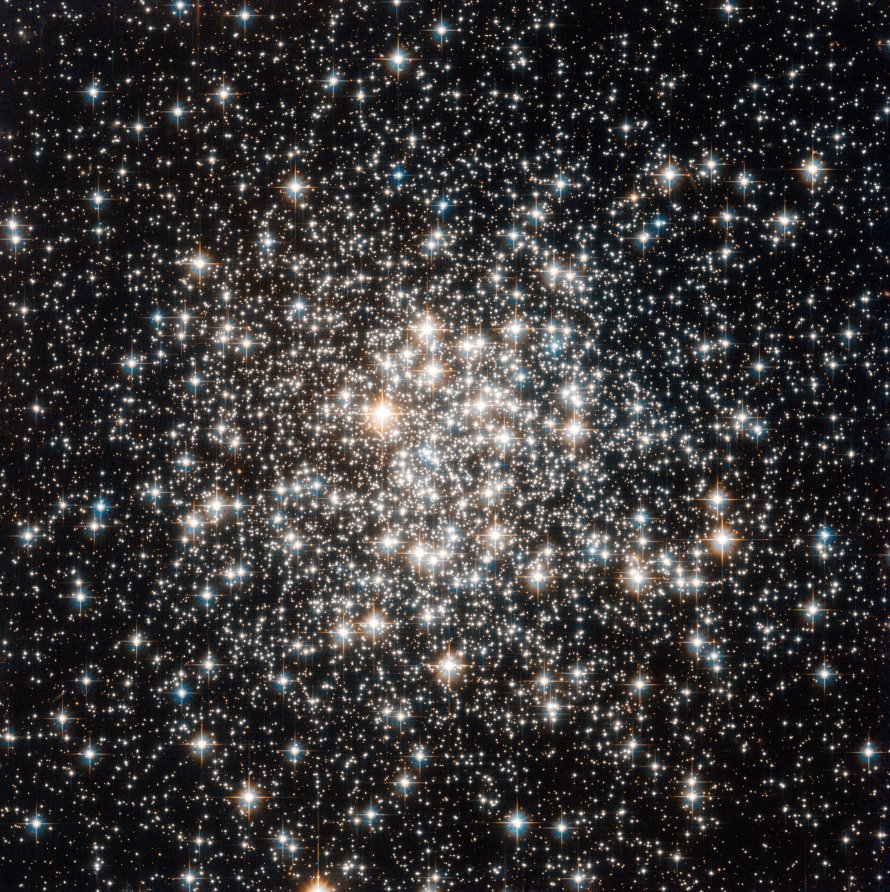M107 (NGC 6171)
Messier 107 (NGC 6171) is a globular cluster located in the constellation Ophiucus, in the Galactic Center of the Milky Way Galaxy in the Local Group of galaxies. M107 is 21000 light years away from Earth.
M107 is best viewed during mid-summer, is magnitude 8.9, and can be viewed with binoculars. M107 is 10' in apparent size. For reference, the full moon is 30'.
Observing difficulty: Intermediate
- Name:
- Type:
- globular cluster
- Constellation:
- Ophiucus
- NGC or IC:
- NGC 6171
- Magnitude:
- 8.9
- Viewing:
- binoculars
- Size:
- 10'
- Distance (light years):
- 21000 LY
- RA:
- 16h 32.5m
- Dec:
- -13 3'
- Season:
- mid-summer
- Milky Way location:
- Galactic Center
- Galaxy group:
- Local Group
- Messier Marathon #:
- 77
* The naked eye can see up to magnitude ~7-8 objects under ideal dark sky conditions.
A Dense Globular Cluster
Messier 107, also known as M107 or NGC 6171, is a globular cluster located in the constellation Ophiuchus, "The Serpent Bearer". It was discovered by Pierre M?chain in April 1782 and was later added to the Messier catalogue by Helen Sawyer Hogg in 1947. As one of the last entries in the Messier catalogue, M107 offers a rich field of stars for study and observation.
Characteristics of Messier 107
Being a globular cluster, M107 comprises hundreds of thousands of stars tightly bound by gravity, all which formed from the same molecular cloud. The stars in M107 are densely packed towards its core, leading to its classification as a class X globular cluster, where the scale goes from I (most concentrated) to XII (least concentrated).
Studies of M107 reveal that it contains a relatively low abundance of elements heavier than helium, a feature common among older globular clusters. M107 is also known to host several variable stars and has been a subject of study for astronomers trying to understand stellar evolution.
Magnitude and Distance
Messier 107 has an apparent magnitude of 8.85, placing it within the reach of small telescopes and even binoculars under good sky conditions. The globular cluster is approximately 20,900 light-years away from Earth, making it one of the more distant Messier objects.
Finding and Observing Messier 107
Located in the constellation Ophiuchus, M107 can be best seen in the summer months from the northern hemisphere. It lies about 2.5 degrees southeast of the star Zeta Ophiuchi, which is the third brightest star in the constellation.
Given its magnitude, M107 is a challenging but not impossible target for binoculars, especially in dark skies. A small telescope will reveal a faint and slightly oval cloud of light, while larger amateur telescopes under good conditions can resolve the cluster's outermost stars and reveal its irregular shape. Its dense core, however, may remain unresolved except in larger telescopes.
Messier 107 offers a captivating view as an ancient and tightly bound stellar family. Its dense core and myriad of stars make it a fascinating object for scientific study and a rewarding challenge for amateur astronomers.



